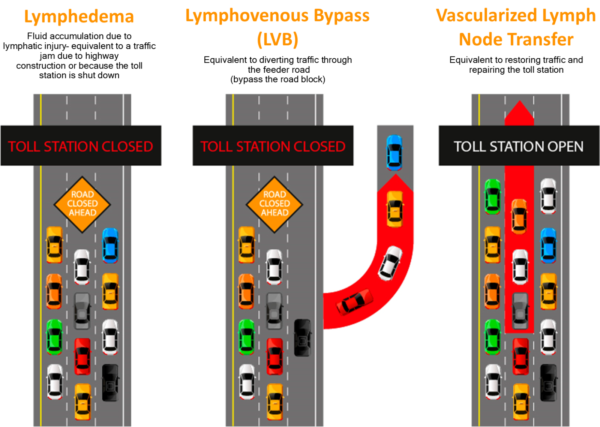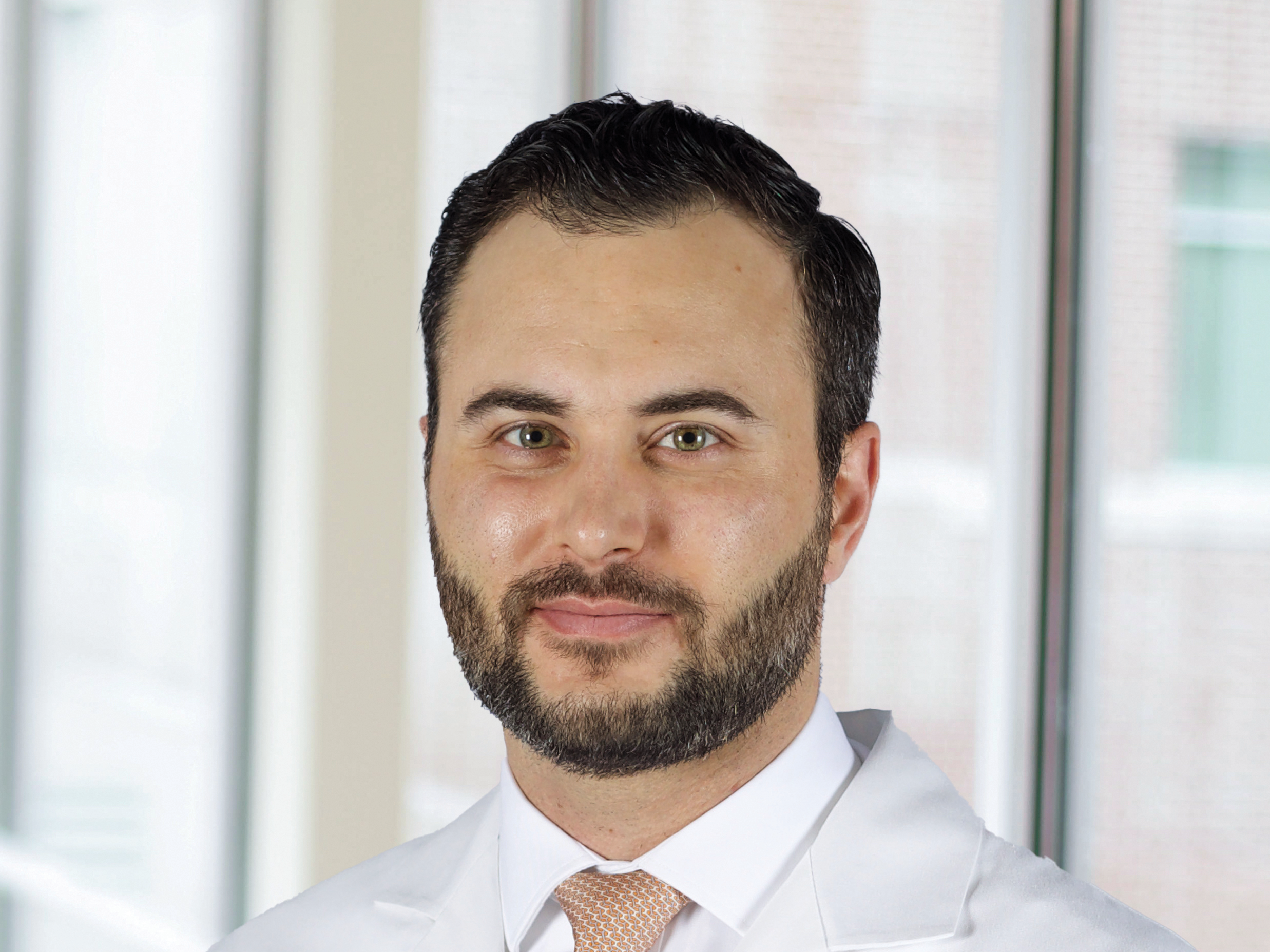Overview
The Comprehensive Lymphedema Service is a multidisciplinary team of experts focused on the prevention, diagnosis and treatment of lymphedema through surgical and non-surgical treatment options. The team includes specialists from different fields and disciplines, including physical therapy, surgical oncology, plastic surgery, radiation oncology, medical oncology, gynecologic oncology, and vascular surgery. This state-of-the-art program allows patients in the region and beyond to receive the highest quality care right here in East Tennessee.
The Comprehensive Lymphedema Service is led by Stefanos Boukovalas, MD, a plastic surgeon at UT Medical Center. Boukovalas received his fellowship training at MD Anderson Cancer Center where he was trained in pioneering surgical techniques by experts in the field of surgical lymphedema treatment.
What is Lymphedema?
Lymphedema is buildup of fluid, most often of the arm or leg. When the lymph vessels and/or the lymph nodes are not working properly, fluid does not flow out of the arm or leg and lymphedema occurs. (It is similar to a roadblock causing a traffic jam on the highway).
The most common cause of lymphedema is lymph node removal to treat cancer. Cancer-related lymphedema is most common among breast cancer patients; however, it can also develop after treatment of melanoma, sarcoma, gynecologic, genitourinary and head and neck cancer. Other causes include radiation, infection, trauma, medications, and birth conditions; however, these are rarer. Lymphedema is a condition that has no cure, but can be effectively managed through multiple treatment options, both non-surgical and surgical, especially if diagnosed early.
Lymphedema may happen right after surgery, many years later, or NEVER. Most commonly, it happens between 6 months and 3 years after the lymph node surgery. Diagnosing and treating lymphedema early can improve patients’ symptoms and quality of life.
Signs & Symptoms of Lymphedema
- Swelling in the arm, breast, chest, leg, or groin region
- A feeling of heaviness or tightness in the body part
- Jewelry that becomes tight without weight gain
- A decrease in movement in the hand or wrist; foot or ankle
- Pain or aching in the affected body part
Symptoms can impair daily activities and patients are prone to recurrent infections.
Your Care in the Comprehensive Lymphedema Service
Even though there is no cure for lymphedema, there are treatment modalities that aim to control or improve patient symptoms.
Non-Surgical Treatment Options
Non-surgical techniques, including compressive wrapping and garments, manual lymphatic drainage (MLD), compression pumps and decongestive exercises, are generally considered first-line interventions.
Our lymphedema physical therapists have completed additional specialized training and provide the following treatment modalities:
- Manual Lymphatic Drainage (MLD) techniques are designed to increase the movement of lymph and interstitial fluid throughout the body. The goal of MLD is designed to redirect the flow of lymph around the blocked areas into healthy lymph vessels.
- Multi-Layered Compression Bandages involve applying a three-layer bandaging system to the affected extremity. The compression treatment utilizes stockinette, finger or toe bandages, padding and short-stretch bandages. Short-stretch bandages are the main component that delivers compression. They are applied in various widths and in multiple layers by our therapist.
- Lymphedema Exercises include exercises that stimulate the lymph node around the muscles of the affected areas. The exercises follow a particular lymphatic pathway. When the muscle is contracted it stimulates the nearby lymph node which will help redirect the lymph flow.
- Lymphedema Skin Care precautions focus on preventing openings in the skin of the affected areas and avoid over-stressing the affected areas. Patients will be educated on easy ways to help prevent worsening of the symptoms that can be applied to everyday life.
- Compression Items need to be fitted at the end of the treatment. These are items that the patient can place at home on their own. The purpose of compression is to maintain the reduction achieved by the listed treatment methods above. The physical therapists will help you find a vendor who can supply these items. They will also teach you how to put them on, take them off, when to wear them, sizing and how much pressure (mmHg) the items should apply, specifically for each individual patient.
Patients will be evaluated and treated by physical therapists certified in lymphedema management at UT Medical Center.
Surgical Treatment Options
After being evaluated by our physical therapy team and treated with front-line non-surgical techniques, patients can then be referred by their physical therapist for surgical treatment evaluation by plastic surgeons with special training in surgical techniques to treat lymphedema.
Traditional surgical techniques include various types of resection of the affected tissue, associated with significant issues and suffering. Liposuction has been successfully used as an alternative method, however, results are often temporary.
The evolution of reconstructive microsurgery has allowed plastic surgeons to develop revolutionary techniques to treat lymphedema. There are two cutting edge procedures that aim to address the underlying disorder and improve drainage of lymphatic fluid:

- Lymphovenous bypass: The surgeon identifies the blocked lymphatic channels and reconnects them to a nearby vein to divert lymphatic flow. This minimally invasive technique is performed through very small incisions (less than an inch long). Super-microsurgical instruments are used to identify and reconnect the lymphatic vessels, which are less than 1mm in diameter.
- Vascularized lymph node transfer: The surgeon removes functioning lymph nodes from the groin area, trunk, neck or from inside the abdomen. The functioning lymph nodes are then transferred to the affected area to replace the lymph nodes that were removed during the cancer operation. The transferred lymph nodes will integrate into the tissues and act as pumps to remove fluid from the affected limb.
The surgeon will evaluate your medical history, test results and examination findings to determine the best individualized treatment plan for you. Under certain circumstances, you may be a candidate for more than one of the procedures described above.
Prophylactic Lymphedema Surgery
In addition to surgical options for lymphedema management, we are now offering a novel surgical option for the prevention of lymphedema in high risk patients. LYMPHA (Lymphatic Microsurgical Preventive Healing Approach) is an innovative technique that is performed simultaneously with lymph node surgery (dissection). The blocked or injured lymphatic vessels are identified and immediately reconnected to a nearby vein to re-establish lymphatic drainage of the affected extremity. The procedure is performed through the same incision as the lymph node dissection, so no additional scars are created. Ask your breast surgeon or surgical oncologist to find out if you may be a candidate for prophylactic lymphedema surgery.
Your Next Steps
Patients interested in being evaluated by the Comprehensive Lymphedema Service should ask their existing provider to click here to submit a referral.
Your multidisciplinary team will include experts from:



